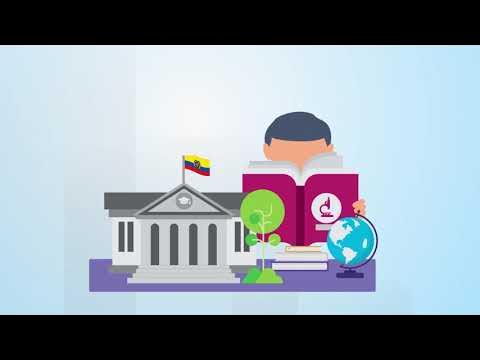กรอบแนวทางการประกันคุณภาพภายนอก (พ.ศ.2567 - 2571)
Summary
TLDRThe script outlines a comprehensive quality assurance process for educational institutions. It involves external evaluators assessing self-assessment reports, conducting on-site visits, and analyzing data to provide recommendations. The process includes virtual and on-site inspections, culminating in a report that is reviewed and potentially approved by an accreditation committee, ensuring continuous improvement in educational standards.
Takeaways
- 📝 The script outlines a quality assurance process for educational institutions involving external evaluators.
- 🎼 There are references to music and clapping, suggesting that the script might be part of an event or presentation.
- 🔍 The evaluation process includes a self-assessment report (SAR) and an on-site visit by the external evaluation team.
- 📑 The evaluators use different tools (f01, f02, f03) to assess the institution's general context, collect additional data, and summarize findings and recommendations.
- 🏢 The on-site visit is categorized into three types: Virtual Visit, Onsite Visit, and Hybrid, which combines both methods.
- 🗓️ The on-site visit duration varies from 1-3 days, depending on the institution's context.
- 📱 Evaluators use an application called Ones V for checking in during the on-site visit.
- 🤝 The script emphasizes collaboration between the institution and evaluators, with a focus on not burdening the school with excessive documentation.
- 👥 The evaluation aims to assess various aspects, including student development, management, and learning processes.
- 📈 The script mentions the use of technology during the evaluation process, such as recording videos and taking photos to capture the school's activities.
- 📊 The evaluation results are discussed in meetings with the educational institution to ensure accuracy and provide an opportunity for the school to clarify any points.
Q & A
What is the purpose of the external quality assurance process described in the script?
-The purpose of the external quality assurance process is to evaluate and analyze the self-assessment report (SAR) of an educational institution to ensure its quality standards.
What are the different formats of the assessment tools mentioned in the script?
-The script mentions three formats of assessment tools: f01, f02, and f03. f01 is for general information about the institution, f02 is for collecting specific data based on questions from f01, and f03 is for summarizing findings and recommendations.
What is the significance of the onsite visit in the quality assurance process?
-The onsite visit is significant as it allows assessors to collect data directly from the institution, observe actual practices, and verify the information provided in the SAR.
How does the script suggest that institutions should prepare for the assessment?
-The script suggests that institutions should prepare by providing actual, regularly used documents and evidence, and not create excessive documentation specifically for the assessment.
What is the role of the liaison officer from the educational institution during the assessment?
-The liaison officer is responsible for coordinating with the assessment team, providing necessary information, and facilitating the assessors' visit to the institution.
What types of data do the assessors collect during the onsite visit?
-Assessors collect data in the form of sound, text, photographs, and videos. They observe the school environment, interview relevant personnel, and gather information to verify the institution's operations.
How is the feedback from the assessment process communicated back to the educational institution?
-The feedback is communicated through a draft report that is shared with the institution for their confirmation. The institution can then provide their comments or clarifications.
What happens if the educational institution does not agree with the assessment findings?
-If the institution does not agree with the findings, they can send a letter with supporting evidence to the assessors for review. If the assessors concur, they will make the necessary corrections; if not, they will confirm the findings to the institution.
What is the timeframe for the educational institution to confirm the quality assurance results after receiving the report?
-The institution has a timeframe of 30 days from the date of receiving the draft report to confirm and endorse the external quality assurance results.
How long does the entire external quality assurance process take from start to finish?
-The script does not provide an exact timeframe for the entire process, but it mentions several steps that have specific deadlines, such as the analysis of SAR within 7 days, the onsite visit within 7 days after approval, and the submission of the draft report within 7 days after the visit.
What is the significance of the 'Hybrid Visit' mentioned in the script?
-The 'Hybrid Visit' combines both virtual and onsite visits, allowing for a comprehensive assessment that includes both remote and in-person evaluations.
Outlines

このセクションは有料ユーザー限定です。 アクセスするには、アップグレードをお願いします。
今すぐアップグレードMindmap

このセクションは有料ユーザー限定です。 アクセスするには、アップグレードをお願いします。
今すぐアップグレードKeywords

このセクションは有料ユーザー限定です。 アクセスするには、アップグレードをお願いします。
今すぐアップグレードHighlights

このセクションは有料ユーザー限定です。 アクセスするには、アップグレードをお願いします。
今すぐアップグレードTranscripts

このセクションは有料ユーザー限定です。 アクセスするには、アップグレードをお願いします。
今すぐアップグレード関連動画をさらに表示

Analisis Sterategi

Consejo de Aseguramiento de la Calidad de la Educación Superior - CACES -¿Quiénes somos?

4. Higher Education Framework in India - Higher Education | UGC NET Paper 1 | By Bharat Kumar

20.3b Particle Velocity Selector | A2 Magnetic + Electric Field | CAIE A Level Physics

Project Quality Management - Processes and Seven Basic Quality Management Tools - AIMS UK

BPPE Application for Approval to Operate for an Institution Non Accredited
5.0 / 5 (0 votes)
